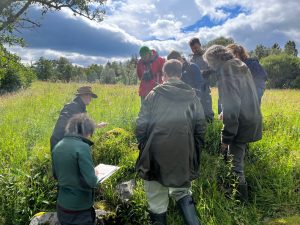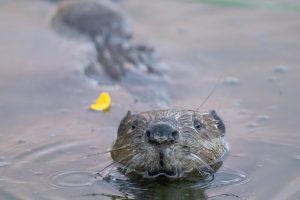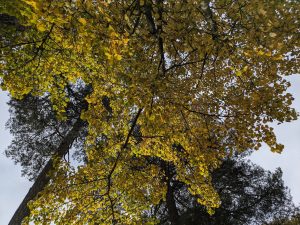Agricultural news: November 2024
6th November 2024

Cairngorms Agricultural Advisory Group
At its most recent meeting on 31 October, the Cairngorms Agricultural Advisory Group (CAAG) focussed on the Cairngorms 2030 Future Farming programme. Attendees heard from the Park Authority on the aims of the programme to trial new low carbon and nature rich farming techniques, monitor their effectiveness over a five year period, and share the learning from the six pilot farms throughout the Park.
Discussions focussed on some of the techniques being trialled, measuring carbon sequestration not just emissions, collating biodiversity data at a regional scale, and using the learnings from the programme to highlight the effectiveness of current AECS schemes in delivering climate resilience and biodiversity in the Cairngorms.
The group will continue to discuss the Cairngorms 2030 Future Farming programme in future meetings, there will be more information on the Park Authority website soon, and opportunities to get involved through events will be widely publicised.
The Cairngorms Future Farming project is exploring how farming in the Cairngorms can help tackle the nature and climate crisis, whilst increasing business resilience and maintaining profitable farm businesses. This project is part of the Cairngorms 2030 programme, funded by The National Lottery Heritage Fund.
The first stage of the project has involved working with six pilot farms who will trial different farming practices that aim to lower the carbon footprint and increase biodiversity on their farm. These practices are likely to include finishing cattle on home-grown feed, methods to establish red clover and herbal leys, bracken management options and more.
These activities will be monitored to assess their impacts on carbon, nature, productivity, costs and ease of implementation. We will also share learnings from the project with the wider farming community as it develops, including through farm walks and case studies, which will begin in 2025.
Find out more on the project webpage here. To keep up to date with the project and upcoming events, or if you have a question for the team, email [email protected]
Agricultural Advisor
We had a great response to the advert for the Agricultural Advisor role, the applications are currently being processed and interviews will take place later this month. We would hope to have someone in post early in the new year and will update you as soon as we have any news.
Creation of an aspen network – free aspen trees available
Aspen trees are a priority species here in the National Park, with several rare insects – including the aspen hoverfly and dark bordered beauty moth – relying on them. But the aspen network has become fragmented over time, and we’re keen to work with farmers and crofters to build it back up through a project providing free trees.
The aim is to create a healthy, well connected aspen network with plentiful tiny aspen suckers through to mature and decaying aspen to provide an important habitat for fungi, lichens, mosses, moths and hoverflies.
If you have existing native woodland or are looking to plant native woodland on your farm, email Niamh Byrne, Aspen Project Officer, at [email protected] giving your location, name of your landholding, email and phone number.
**Aspen will be available depending on demand and the location of your landholding in relation to the aspen network.
Summer grassland workshops
Three grassland workshops took place over the summer involving 24 farmers, crofters and land managers from the National Park. The events – delivered with Fife Coast and Countryside Trust and with support from Plantlife Scotland and Speyside Fields for Wildlife – took place in Newtonmore, Tomintoul and Braemar. 
Workshops included discussions around the value of grasslands, theory versus the reality of managing them, grassland mapping, survey techniques and support available to landholders. They also included several site visits:
Lee at Nuide Farm showcasing a number of sites of species-rich grassland.
Another site maintained by sheep on a rotational grazing system.
Thijs from RSPB Scotland showing off Tromie meadows and the meadow management kit they have.
Ron at Bush Farm treating the group to a grassland with a view, also managed on rotation with cattle.
The areas of species-rich grasslands on show had a running theme of being used for autumn and winter grazing or being grazed throughout the year but receiving long enough rest periods to enable the plants to flower. Some sites had bracken encroachment and there is fresh advice available from NatureScot on bracken management since the phasing out of Asulux.
Many of the land managers visited were doing regular worm counts to target and / or reduce their dosing of expensive wormer – a positive for grassland life too since Ivermectins have been shown to negatively impact on invertebrates.
If you are interested in finding out more, please email [email protected]
Beaver update
 The six beaver families or pairs released at three sites in 2023 and 2024 have moved around exploring their territories, one very briefly as far as Spey Dam, before establishing themselves on or near the release sites. The weekly monitoring programme of cameras, patrols, reports from land managers, and annual river survey is working well.
The six beaver families or pairs released at three sites in 2023 and 2024 have moved around exploring their territories, one very briefly as far as Spey Dam, before establishing themselves on or near the release sites. The weekly monitoring programme of cameras, patrols, reports from land managers, and annual river survey is working well.
The Park Authority has responded to four concerns about potential beaver impacts on biodiversity and land management. Two of these have been addressed by increased monitoring and two involved the successful implementation of the management and mitigation plan, to the satisfaction of all concerned.
A few trees which were overhanging a B-road were felled as a precaution in September after being gnawed by beavers. Having been informed about a collapsed beaver burrow, the Park Authority immediately arranged an on-site meeting with the two relevant land managers to consider appropriate next steps to mitigate the potential impact on cattle, vehicle access (for fishing) and pedestrian access. The hole was covered and cattle excluded from the area.
The Park Authority has also liaised with NatureScot as part of the national Beaver Mitigation Scheme. Trail cameras were installed to establish if the site was an active den site: beaver residence of the burrow has ceased and there is infrequent activity in the immediate area. Surveying tree damage and risk assessing impacts remains a key element of our monitoring regime.
The next stage of releases as part of the five-year licence has begun and will be completed before the end of the year. You can find out more about this on the beaver webpage.
The second meeting of the Upper Spey Beaver Management and Mitigation Group was held on Wednesday 30 October. Six-weekly updates will be provided to the group between the quarterly meetings.
In brief
Goose management scheme
Between 1 July and 30 September, we controlled over 200 resident greylag in the target area. This should make a real difference to the numbers of geese which live in the Strath all year round and which are grazing spring grass and summer crops.
Targeted control of resident greylags will re-start in March and April as resident birds start to pair up and migrant numbers begin to reduce.
Find out more about what’s happening this year by contacting the team on [email protected]
Farm Resilience Programme
Livestock farmers in the Cairngorms are encouraged to apply for the Royal Countryside Fund’s Farm Resilience Programme. The programme offers free business skills training covering business health check tools, accounts and budgeting, and protecting physical and mental wellbeing.
Climate Adaptation Fund
Farmers were among the beneficiaries of the £370,000 Climate Adaptation Fund, which was awarded to projects in the summer to support immediate action to address the challenges of climate change in the National Park. Projects included flood bank restoration and riparian woodland planting at Balliefurth Farm, a tow ’n fert spreader at Culreach Farm and two seed drill projects – the Laggan Direct Drill Collaboration and the Strathspey Direct Drill Collaboration.
Find out more about the Climate Adaptation Fund and the projects it funded here.
Integrating Trees Network – upcoming events
The Integrating Trees Network is a farmer-led initiative which aims to encourage more farmers and crofters to plant trees. The network helps raise awareness of the multiple benefits that planting trees can bring to agricultural businesses. They are organising two free online events in November.
Thursday 21 November 7pm – 8pm. Online event.
Woodland Creation & Management to maximise Biodiversity: What needs to be considered? Come along find out how to create and manage woodland to meet your biodiversity objectives. Book your free place here.
Thursday 28 November 7pm – 8pm. Online event.
Shelterbelts: What needs to be considered? Come along and find out how to create the optimum shelterbelt, through design, species, porosity, height, length, orientation and shape to meet your objectives.
Ends.
Click here to join our agriculture mailing list and receive this newsletter in your inbox.
